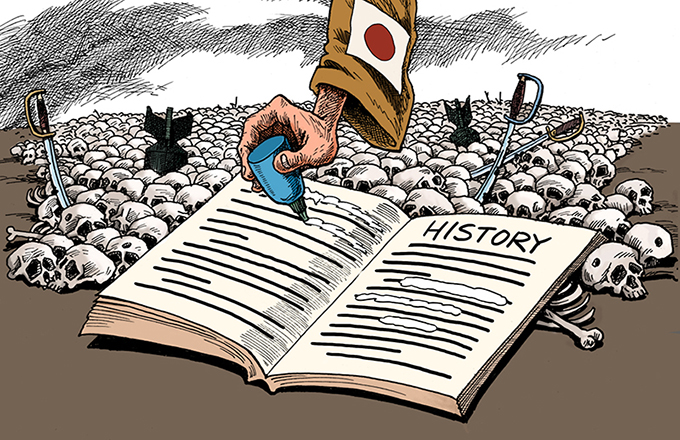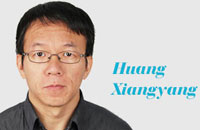The path economic reform should take
All eyes are on the new leadership, headed by President Xi Jinping and Premier Li Keqiang, to see how it plans to change China into a consumption-led, bubble-free and clean economy.
After a soft patch last year, China's economy has now settled into an acceptable growth pace of about 8 percent, defying the critics who forecast a hard landing for the economy. Growth can continue at a slightly slower, but more sustainable pace given the momentum generated by rapid urbanization, industrialization in western China, and rising aspirations of a growing middle class. But we all know that the current investment-led growth model cannot continue to drive the economy in the long run. So, how does the new leadership begin to solve the looming problems and ensure that China stays on the right track? China's economy faces multiple imbalances: between the coastal areas and the western region, investment and consumption, cities and the countryside, and rich and poor. Over the past decade, policymakers have tried to rebalance the economy, building an urban social welfare system, incentivizing manufacturing investment in western China, cutting taxes and boosting subsidies in rural areas and encouraging rural-urban migration. There were some successes.
The challenges now facing the economy, though, are more complex. There are dynamics in play that are undermining the sustainability of growth. Rapid economic development generates pollution - a lot of it over time if regulation is weak. Loose monetary policy that saved the economy from a nasty recession in 2009 has pushed up land prices. It is time to re-engineer the system, instead of implementing one-off policy changes, so that positive outcomes are generated again.
However, Chinese leaders face big stumbling blocks in the form of interest groups, which are blocking such large-scale re-engineering. Coordinating the reform will be crucial too, because the problems are increasingly interconnected. The focus should be on building long-term institutions and establishing the rules of the game.
But putting these principles into practice is easier said than done. Recent steps to revamp the Ministry of Railways and the move to grant more powers to the food and drug regulator to improve food safety are a good start. In the next couple of years, the leaders need to focus on four broad areas of reform.
First, they should support urbanization through meaningful policies that attract more people to cities and help them integrate into urban life. This would entail offering social welfare to the new migrants, perhaps starting with partial access to pension and healthcare services in the first five years and then upgrading them to full-benefit status.
The government will also need to increase the supply of housing, perhaps funded through government-guaranteed bonds that are paid for with the rental income from social housing and a subsidy from the Ministry of Finance. Additionally, it could let villagers living on the outskirts of large cities build low-storey, for-rent housing.
Second, the leaders should provide a level playing field for the private sector to compete with State-owned enterprises. China has big ambitions to build a 21st century industrial base with safe food-processing enterprises, patent-filing biotechnology companies and clean-energy producers. For that, it has to take a range of measures: sell off non-strategic enterprises that do not add any economic value; cut back on over-regulation; shift the ownership of profitable SOEs to the National Social Security Fund to boost funding for future pensions; charge both State and private companies the market price for land, water, electricity and capital, thus encouraging them to conserve resources and forgo wasteful projects; and openly investigate corruption and allow companies that get into difficulty to fail.
Three, the leadership has to raise sufficient funds for targeted social investments. This can be done by ensuring that SOEs pay dividends into the government budget by incentivizing the top contributors and tolerating a larger budget deficit - even 3 percent of GDP is acceptable if the money is invested properly. The deficit can be funded through bonds sold exclusively by the central government, and by broadening tax collection through the introduction of inheritance and capital gains taxes, and expanding property taxes across more cities. Such taxes should help address inequality, but they should also be accompanied by a discernible improvement in the quality of government services.
Last, the leaders have to centralize and prioritize public spending on areas that matter. Much of the fiscal revenue flows into the central government, but local governments account for 70 percent of all spending, including 60 percent for education and 40 percent for healthcare. Centralizing this spending would make it balanced across the country and direct it to targeted areas.
Countries like Japan and the Republic of Korea had made secondary education free by the time they reached China's current level of development. Since only 10 percent of migrant children in China currently complete junior high school, the workforce will be unable to upgrade and inequality will become more entrenched. The government needs to offer compulsory education to senior high school, and allow private universities to blossom.
The public healthcare sector has to be made more attractive for talents, and private providers that offer treatment at reasonable costs need to be gradually brought into the public insurance system.
Additionally, infrastructure spending should be taken off commercial banks' books and put in the Ministry of Finance's books. The government could fund these projects through long-term bonds, and banks should not lend to any project that is not going to pay for itself. Eventually, the banks will need to be weaned away from local government interference, making them truly commercial.
China's economic model has delivered unprecedented prosperity to a large cross section of the people. But it has also fostered the dynamic imbalances that now threaten to undermine the economy. Policymakers, therefore, need to adjust the imbalances to set in motion new growth dynamics. This is a huge task. Senior officials understand the challenges. It is now a question of confronting them.
The author is head of Greater China Research at Standard Chartered Bank.
(China Daily 03/25/2013 page9)





















